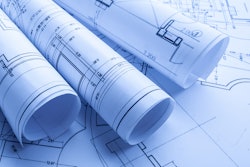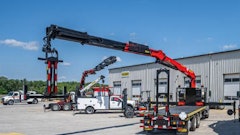
Late payments and slow cash flow have plagued the construction industry for so long that most of us think of it as the norm. And it’s only getting worse - according to one recent report, 82% of contractors now face payment waits of over 30 days, up from 49% just two years ago. Slow payments in construction are often the result of a fractured and potentially very long chain of laborers and suppliers, with money frequently changing hands.
However, a choppy, unpredictable cash flow can threaten a construction company’s smooth operation and ultimately, its survival. Improving cash flow requires close attention to those sound financial management practices that all businesses must adhere to - planning, budgeting and controlling expenses, for example. But there are several strategies available to construction companies specifically that can help ensure a more fluid, predictable and reliable cash flow.
Taking Advantage of Asset-Based Lending Lines (ABL)
Rather than considering your operating cash flow, with ABL, a lender will instead focus primarily on the value of your business assets, which can be used as collateral to secure a loan. First on the list is accounts receivable; followed by assets like inventory, equipment, real estate and even intellectual property.
In addition, many construction companies are prime candidates for ABL as asset-rich enterprises that may have variations in cash flow but still need significant capital to help them operate and grow. Another strong advantage of the ABL approach is a relative freedom from the covenants that usually come with more traditional cash-flow lending. An example of this is maintaining a certain interest coverage ratio, total assets to debt ratio or debt to equity ratio. In many cases, you can draw upon your line of credit without seeking the lender’s permission or approval, enabling you to deploy capital quickly and flexibly. Longer term, you want to make sure you develop relationships with banks that offer ABL as a way to access liquidity and boost your cash flow in times of need.
Ensuring Compliance with Lien Requirements
In construction, mechanics liens can help ensure that laborers and suppliers are paid for their work and materials. Liens remain a powerful way to preserve and protect cash flow, with the majority proving effective at eliciting prompt payment without the need for foreclosure action.
Mechanics liens exist in every state, but they can be complicated, with each state having different compliance requirements. One of the biggest fails construction companies encounter is failing to file a lien within a specific timeframe after project completion and therefore losing the legal right to do so. Construction companies also need to know the specific steps that must be taken (for example, sending preliminary notice as well as intent notice). If you don’t meet all the requirements and file a mechanics lien anyway, it can be deemed a “frivolous lien” and result in costly consequences.
Negotiating Expedited Payments
This can be a good idea for construction companies, general contractors, and subcontractors who have the necessary wiggle room in their budgets. Expedited payments can accelerate cash flows. To negotiate an expedited payment in a construction contract, clearly define payment intervals around project milestones versus just a lump sum, which can help establish you as a trustworthy, reliable service partner. When possible, consider offering payment discounts and always ensure transparent, crystal-clear payment terms. Ambiguity in contracts or payment terms can breed delays that ripple into cash flow bottlenecks.
Meticulous and Timely Management of Change Orders
It is often said that “change is inevitable.” On construction projects, a more apt saying is, change orders are inevitable. No matter how clear and adamant you are about getting the budget you need up front, unexpected issues always seem to arise. For example, pricing for framing lumber famously ascended during the pandemic, and even in recent months has remained volatile.
Regardless of whether a change order is initiated by the construction company or the customer, it needs to be handled as expeditiously as possible in order to avoid risks to cash flow and the bottom line – including potential payment denials, disputes and project delays. In addition, prompt and timely handling of change orders can help construction companies lock in the best prices for materials early on.
Increasing Your Bonding Capacity
A natural consequence of improved cash flow, enabled through techniques and practices such as those described above, will be improved bonding capacity, which in turn can serve as the ultimate turbo-driver of cash flow. Many bonding agents require a company to have audited or reviewed financials. The higher your bonding capacity, the wider the selection of potentially lucrative jobs you’ll be able to pursue.
To a certain extent, the cash flow challenge is intrinsic to the construction industry, and we cannot expect this to necessarily change anytime soon. The best we can do is to adapt to it, and construction companies must consider the full range of options unique to their industry that can be deployed alongside tried-and-true financial management strategies to help preserve and protect cash flow.



















